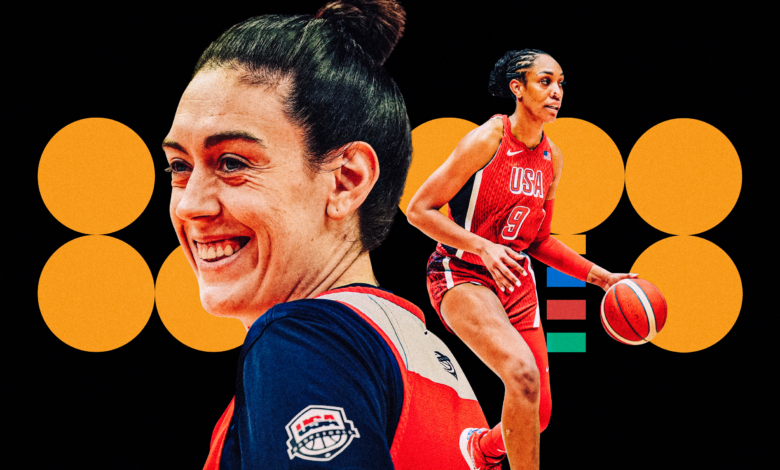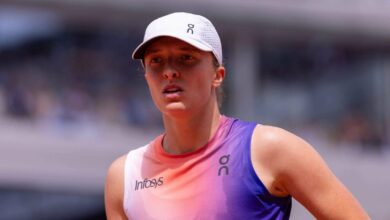As the U.S. women’s team chases an eighth consecutive gold, one question mark lingers

PARIS — In a small, fluorescent-lit gym just north of Paris, Team USA coach Cheryl Reeve was asked about her team’s biggest advantage during the Olympics.
Depth, she paused. No, size.
“1A, 1B,” she decided.
Reeve is right. With three players over 6’3” and a pair of guards in the 6’3” range, Team USA will have a height and length advantage, one through five, over nearly every opponent that steps onto the court at this Olympics. And when it comes to depth, while other countries have built talented rosters over the years that could easily hold their own against the U.S. starting five, the real blow for opponents comes when Reeve deploys her reserves and rotation players, who no opponent six through 10 can match up to. It must feel like, Oh, you thought those five WNBA All-Stars were tough to defend? Well, how about we try five more? And then, just to be sure, two more?
And then there’s the fact that the Americans have the two best players in the world, A’ja Wilson and Breanna Stewart, the most experienced Olympian, Diana Taurasi, and four members of the two-time reigning WNBA champion Las Vegas Aces (including Wilson).
So yes, as usual, Team USA has some advantages coming into these Olympics, not to mention the legacy this team carries with it into these Games.
Because no dynasty dominates the sport as much as the U.S. women in international basketball. For seven consecutive Olympic Games, the women have taken home the gold, building the anticipation (and assumption) with each successive victory.
Team USA has not lost an Olympic match (including pool play) since the 1992 Olympics in Barcelona, Spain. The closest match at the Olympics since those 1996 Games — the beginning of the gold medal streak — was a four-point victory over Russia in 2004, but such close matches are rare. Only three times in the last seven Olympics have opponents limited their losses to single digits.
So to say that this Team USA women’s basketball team knows nothing but Olympic gold medals isn’t just a figure of speech. For most of this squad, it’s actually true. Only three players on the squad were alive the last time a Team USA women’s team lost an Olympic game — August 5, 1992 (and Alyssa Thomas was just 4 months old).
And yet, despite all those advantages — both historically and at this particular moment — Reeve is hyper-aware of the disadvantages that come with a country full of female basketball talent.
Because of the depth of Team USA’s player pool, and not just the last 12 players to make the Olympic roster, the personnel rotates more significantly during the four-year cycles between Olympics than in other countries. When the team’s roster was announced in June, the full 12 had never been in training camp together before. And when they took the court in the All-Star Game earlier this month, the 12 had only had two practices with the full complement of players. That kind of condensed preparation time takes a toll on chemistry (as was pretty evident during their loss to the WNBA All-Stars).

“Talent is not the reason we win,” Cheryl Reeve said of Team USA. “It’s the chemistry of our talent.” (Gregory Shamus/Getty Images)
But Reeve knew this would be one of the toughest challenges this team would face. In her first appearance on the court as Team USA’s coach in 2022, Reeve stated the obvious with her team. They would be playing teams that knew each other better, that had played together more, that had practiced together more, but they could never use that as an excuse for not finding a way to play well together.
“Talent is not the reason we win,” Reeve said. “It’s the chemistry of our talent. And that’s what we have to work hard on and focus on.”
Between the All-Star Game and Team USA’s friendly against Germany last week, the group made strides. Defensively (Reeve’s calling card), the group seemed to come together more. Reeve, who also coaches the Minnesota Lynx, leaned on her WNBA experience this season, as the Lynx, down to just five players, managed to mesh well enough during the league’s two-week preseason to produce one of the most impressive first halves of the WNBA season, winning the league-wide Commissioner’s Cup in June.
Team USA knows that in their own pool — Japan, Belgium, and Germany — the players on those teams have gotten more reps together as teams, not only in this last Olympic cycle, but also with some cores that have played together for many, many years. But with the talent, depth, and all the other advantages that Team USA has, the team hopes to use every minute on the court together to accelerate their gelling and let their advantages outweigh any disadvantages that may exist due to their lack of time together.
Because they’re looking to stand on the podium with the program’s eighth consecutive gold medal 13 days before Team USA’s season opener against Japan on Monday, living up to the expectations the seven teams ahead of them have made clear.
Reeve has made sure that this group tries to separate the legacy of Team USA’s 55 consecutive Olympic victories from what this group hopes to do in the next two weeks, but make no mistake: Just like this program has been for the past three decades, the goal and the expectation are one and the same. It’s gold, nothing less. Big wins, nothing less. It’s the Team USA way, nothing less.
(Top illustration: Dan Goldfarb / The Athletics; Juan Ocampo/NBAE/Getty Images; Ryan Stetz/NBAE/Getty Images)




